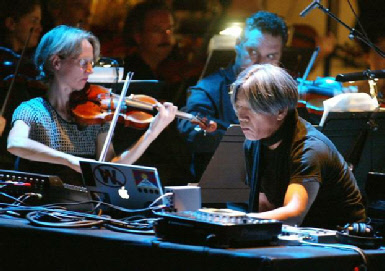At the beginning of the 20th century, composers of classical music were experimenting with an increasingly dissonant pitch language, which sometimes yielded atonal pieces. Following World War I, as a backlash against what they saw as the increasingly exaggerated gestures and formlessness of late Romanticism, certain composers adopted a neoclassic style, which sought to recapture the balanced forms and clearly perceptible thematic processes of earlier styles. After World War II, modernist composers sought to achieve greater levels of control in their composition process (e.g., through the use of the twelve tone technique and later total serialism). At the same time, conversely, composers also experimented with means of abdicating control, exploring indeterminacy or aleatoric processes in smaller or larger degrees. Technological advances led to the birth of electronic music. Experimentation with tape loops and repetitive textures contributed to the advent of minimalism. Still other composers started exploring the theatrical potential of the musical performance.
To some extent, European and the US traditions diverged after World War II. Among
the most influential composers in Europe were Pierre Boulez, Luigi Nono, and Karlheinz
Stockhausen. The first and last were both pupils of Olivier Messiaen. An important
aesthetic philosophy as well as a group of compositional techniques at this time
was serialism (also called "through-
In America, composers like Milton Babbitt, John Cage, Elliott Carter, Henry Cowell,
Philip Glass, Steve Reich, George Rochberg, and Roger Sessions, formed their own
ideas. Some of these composers (Cage, Cowell, Glass, Reich) represented a new methodology
of experimental music, which began to question fundamental notions of music such
as notation, performance, duration, and repetition, while others (Babbitt, Rochberg,
Sessions) fashioned their own extensions of the twelve-
Many of the key figures of the high modern movement are alive, or only recently deceased, and there is also still an extremely active core of composers, performers, and listeners who continue to advance the ideas and forms of modernism.
Serialism is one of the most important post-
Modernist composers active during this period include Scottish composer James MacMillan
(who draws on sources as diverse as plainchant, South American 'liberation theology',
Scottish folksongs, and Polish avant-
